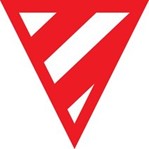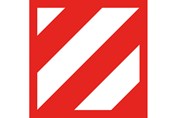HGV Load Projection Width & Length
Whether a vehicle falls within the bounds of the Construction and Use Regulations (C&U) or falls outside due to the fact that it is classed as an Abnormal Indivisible Load Vehicle (AILV), in all cases, the projection of the load (be it width or length) plays a significant part in determining what regulations the load and/or vehicles falls within.
It is important to bear in mind that in addition to the load you must also consider its method of restraint. Equally so, the load can also be an empty receptacle which is in effect the load itself.
Width of Vehicle and Load
The overall width of a heavy motor car, locomotive, tractor or trailer must not exceed 3 metres unless it's load can only be safely carried on a vehicle or trailer exceeding that width. The overall width of a vehicle or load must not exceed 6.1 metres. In calculating overall width, account must be taken of any part of the vehicle and any permanent receptacle strong enough for repeated use with the following exceptions:
- Sheeting
- An empty receptacle that is itself the load
- A receptacle carrying an indivisible load
- A receptacle not exceeding 2.55m in length or width
- Lifting lugs for multi-modal transport
- Tail boards let down to carry loads extending beyond the rear of the vehicle but not essential for their support
- Bridging plates on vehicles transporting trailers used to aid loading and unloading of vehicles but not to support them
- Receptacles, other than maritime containers, manufactured before 30 October 1985;
- Cranes that do not increase the carrying capacity of the vehicle and which are a permanent or essentially permanent feature
Length of Vehicle and Load
The overall length of the vehicle and load must not exceed 30m. Where the weight of the load rests wholly on a category N3 motor vehicle, the maximum length is the overall length of the motor vehicle together with the length of any forward or rearward projection of the load. Where the weight of the load rests wholly on a category 04 trailer, the maximum length is the overall length of the trailer together with the length of any forward or rearward projection of the load.
For a motor vehicle and a trailer that is configured so that the weight of the load rests on both vehicles (whether or not they form an articulated vehicle), the maximum length is the overall length of the trailer together with:
- The length of any projection of the load in front of the forecast part of the trailer; and
- The length of any rearward projection of the load.
For other combinations where the weight of the load rests on at least two vehicles, the maximum length is the overall length of all the vehicles that bear the weight of the load together with:
- The length of any distance between them; and
- The length of any forward or rearward projection of the load.
An articulated vehicle or trailer that is abnormal in respect only of its length e.g.the weight, width and overhangs are within the construction and use limits, can operate under normal Construction and Use rules and does not need to be taxed at the rate of the Special Type.
In calculating overall length, account must be taken of any part of the vehicle and any permanent receptacle strong enough for repeated use and fittings on or attached to the vehicle, subject to the exceptions set out above for overall width.
Attendants and Police notification
Police notification and attendants are required:
- When a load is borne as stated in length limits above and > than 18.75 metres and is substituted for the > 30-metre dimension.
- When a motor vehicle is drawing a trailer or trailers and the overall length of the combination of vehicles, or load, if the load projects beyond the foremost or rearmost vehicle are> 25.9 metres.
Projection Marking
A projection exceeding 2 metres - to the front or rear of a vehicle - must be marked with an end-marker that faces the front or rear of the vehicle (see image below).

A projection exceeding 3 metres - to the front or rear of a vehicle - must (in addition) be marked with side- markers to both its right and left-hand side, facing out sideways (see image below).

Any projection exceeding 305 millimetres in width must be marked with 2 side markers (as above), one visible to the front and one visible to the rear of the vehicle. Alternatively, it may be marked by day-glow, fluorescent or retro-reflective tape, which is coloured red, white or yellow (or any combination), so that the point where the width is at its greatest is clearly visible from the front, rear and side of the vehicle. If tape is used, then no retro-reflective material capable of showing red light can be fitted to the front of the vehicle and only red light can be fitted to the rear.
As an alternative to the end marker or side marker boards pictured above, in any cases where they are required, it is acceptable to use a different form of marker which is authorised in another European country for use on projecting loads. A typical example is shown below.

The following link will provide the most comprehensive guide of vehicle lengths allowable - https://www.gov.uk/government/publications/maximum-length-of-vehicles-used-in-great-britain/maximum-length-of-vehicles-used-in-great-britain